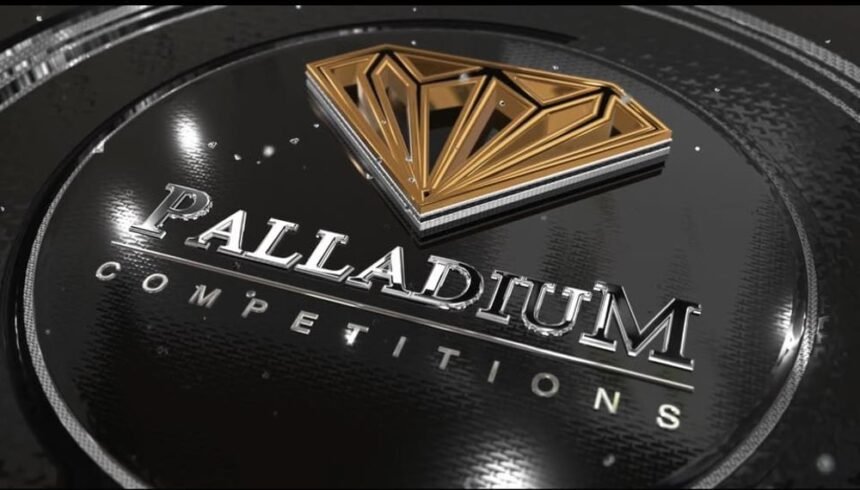Palladium competitions are rapidly gaining traction as elite platforms that reward innovation, strategic thinking, and breakthrough ideas. These competitions go beyond typical academic or industry challenges by encouraging participants to tackle real-world problems through collaboration, creativity, and technological prowess. From engineering to entrepreneurship, these contests open doors to recognition, funding, and global impact.
In this article, we explore the purpose, structure, and significance of Palladium Competitions, along with how they are transforming industries and creating a new generation of problem-solvers.
What Are Palladium Competitions?
Palladium Competitions are structured, goal-oriented contests typically organized by universities, global organizations, think tanks, or private entities. Unlike traditional science fairs or pitch competitions, these events focus on solving high-impact problems in areas such as sustainability, economics, technology, and public policy.
These contests often follow a theme—such as climate change mitigation, AI-powered solutions, or sustainable agriculture—and invite diverse talent from around the world to participate.
The Philosophy Behind the Name “Palladium”
The name “Palladium” holds symbolic weight. In classical mythology, the Palladium was a sacred object believed to protect the city of Troy. In modern contexts, it represents safeguarding innovation, excellence, and progress.
Likewise, Palladium Competitions are designed to safeguard humanity’s future by sourcing innovative solutions and rewarding visionary ideas. They serve as protective shields of creativity against the complex issues our world faces today.
Structure and Phases of Palladium Competitions
Most Palladium Competitions follow a phased structure, ensuring a fair, in-depth evaluation of ideas and their practical application:
Phase 1: Registration and Ideation
Participants register individually or as teams and submit their initial concepts. This stage is about creative problem identification and theoretical solution design.
Phase 2: Development and Mentorship
Shortlisted teams receive access to expert mentorship, seed funding, and technical resources to develop a working prototype or detailed proposal.
Phase 3: Presentation and Evaluation
Participants present their projects to a panel of judges composed of industry leaders, academics, and innovation experts. Criteria include originality, feasibility, scalability, and social impact.
Phase 4: Awards and Implementation Support
Winners receive cash prizes, potential investor connections, media exposure, and sometimes an opportunity for real-world implementation in collaboration with sponsors.
Categories of Palladium Competitions
Palladium Competitions cater to a wide variety of domains:
1. Environmental and Climate Innovation
Challenges may revolve around carbon capture, sustainable urban development, or ocean preservation.
2. Health and Medical Technologies
These include competitions focused on telehealth, affordable diagnostics, or wearable health tech.
3. Artificial Intelligence and Machine Learning
Participants create AI models for tasks like predictive analytics, natural language processing, or data security.
4. Social Entrepreneurship and Inclusion
Themes often touch on financial inclusion, education access, or gender equality through sustainable business models.
5. Infrastructure and Urban Planning
Competitions here deal with smart cities, waste management, and affordable housing innovations.
Who Participates in Palladium Competitions?
The beauty of Palladium Competitions lies in their inclusivity. While some are geared towards students and academics, others are open to startups, NGOs, solo innovators, and even cross-functional corporate teams.
This diversity enriches the quality of ideas and promotes global collaboration. It also leads to unexpected partnerships between coders, engineers, policy-makers, and creatives.
Benefits of Participating in Palladium Competitions
Engaging in a Palladium Competition comes with several tangible and intangible benefits:
Professional Growth
Participants refine skills such as project management, communication, design thinking, and strategic planning.
Mentorship Opportunities
Top-tier professionals provide guidance throughout the competition, enabling growth and refinement of ideas.
Funding and Resources
Winners often gain access to grants, startup capital, and business infrastructure to bring their ideas to life.
Career and Academic Opportunities
Participation is a strong CV booster and can lead to internships, scholarships, or job placements.
Real-World Impact
Winning projects may be implemented by partner organizations, allowing participants to make a genuine difference in the world.
Real-World Examples of Impact
Several globally recognized Palladium-style competitions have already led to significant advancements:
- MIT Solve challenges have accelerated startups in health, education, and economic development.
- XPrize competitions have resulted in revolutionary technologies in ocean health, literacy, and energy.
- Hult Prize has empowered social enterprises that now serve millions globally.
These examples highlight the transformative power of structured competition in solving global challenges.
Challenges and Criticisms
Despite their many strengths, Palladium Competitions face certain criticisms:
Barrier to Entry
Some contests have steep eligibility criteria or require high levels of technical knowledge, which may exclude underrepresented groups.
Implementation Gap
Not all winning ideas receive follow-through support or reach large-scale implementation.
Equity in Judging
Bias in evaluation panels can influence results, especially in subjective categories like social impact or design.
To mitigate these issues, organizers are working toward more inclusive criteria, diverse judging panels, and guaranteed implementation pathways.
Future of Palladium Competitions
The future of Palladium Competitions lies in global digital access and AI-assisted evaluation. As more competitions go online, participation from developing countries increases, adding more perspectives to the problem-solving table.
In addition, real-time data analytics, virtual collaboration tools, and immersive technologies like AR/VR may become standard tools for teams. Competitions will likely become more agile, interdisciplinary, and solution-oriented.
Furthermore, as governments and corporations seek out disruptive innovations to stay relevant, they are likely to invest more in sponsoring these competitions, embedding them into R&D and CSR frameworks.
Conclusion
Palladium Competitions represent a forward-thinking approach to global problem-solving. By uniting creativity, innovation, and collaboration on a competitive stage, they push boundaries and create meaningful change. Whether you’re a student, a professional, or a policy-maker, participating in or supporting such competitions can be a gateway to learning, impact, and global recognition.
Read More: Daskusza Exploration – Unveiling the Mysteries of a Forgotten Land
FAQs about Palladium Competitions
Industries like technology, healthcare, energy, and education are particularly active, though nearly every sector can be involved depending on the competition’s focus.
Yes. Many competitions welcome ideas from diverse backgrounds and encourage cross-disciplinary teams to ensure creative, user-centered solutions.
While hackathons are short-term, code-centric events, Palladium Competitions often span weeks or months and focus on comprehensive problem-solving beyond just coding.
Most competitions are global and actively encourage international teams to foster diverse, inclusive problem-solving.
Prizes vary but can include cash awards, mentorship, investment opportunities, and pathways to prototype development or commercial launch.











